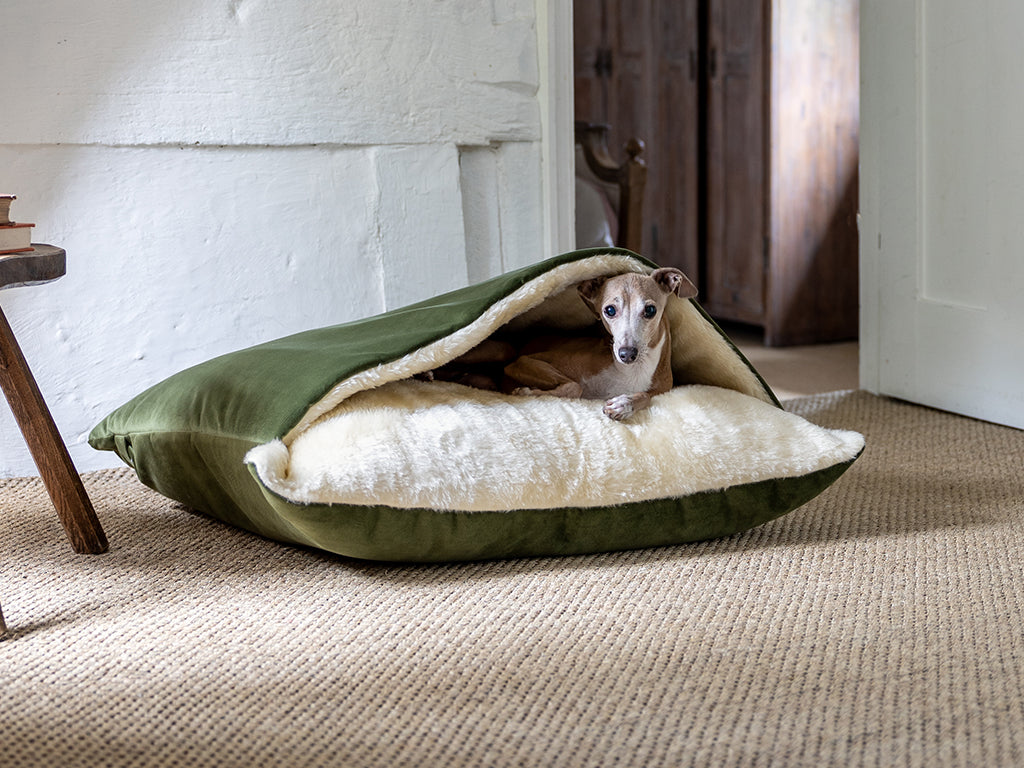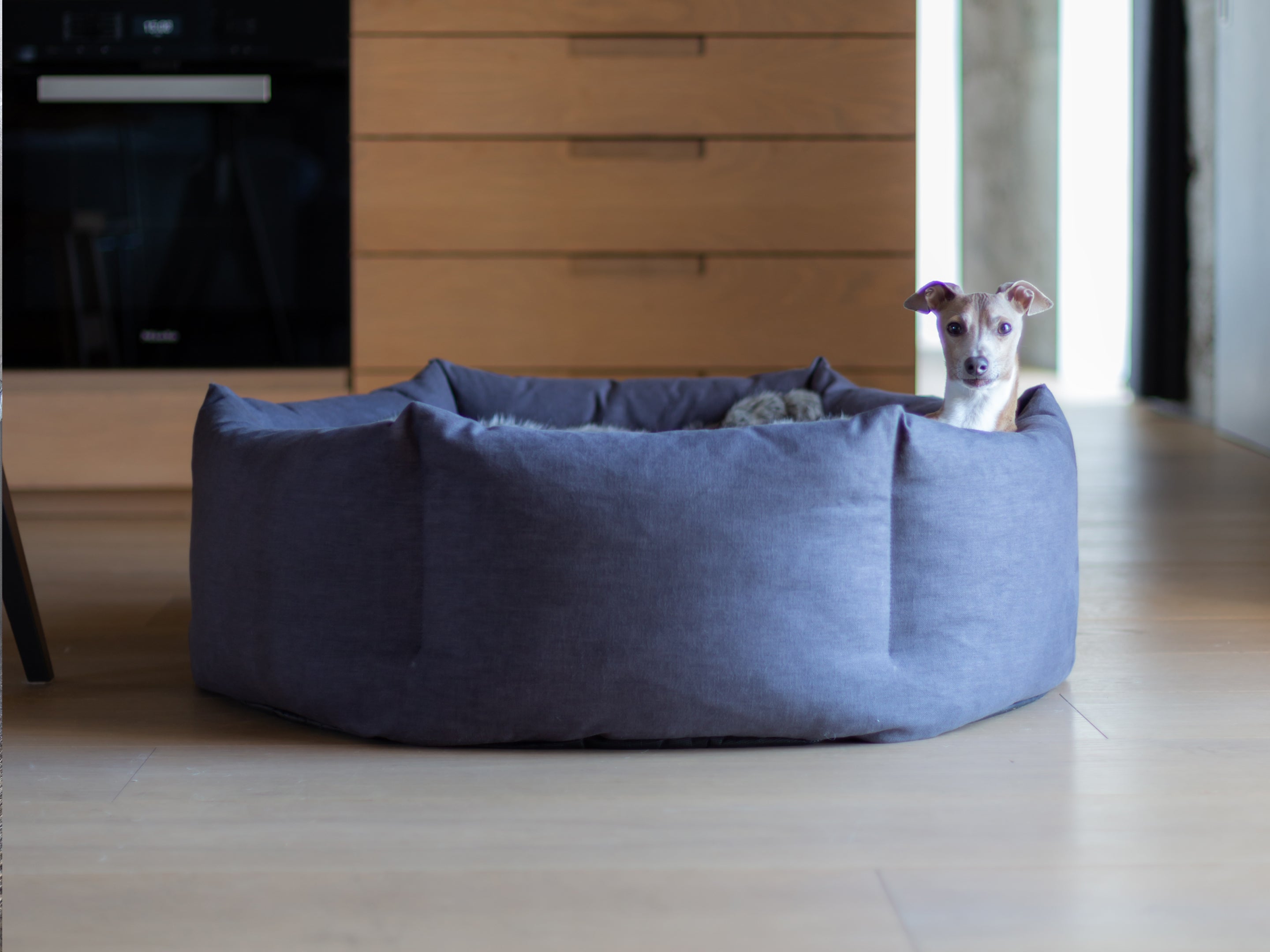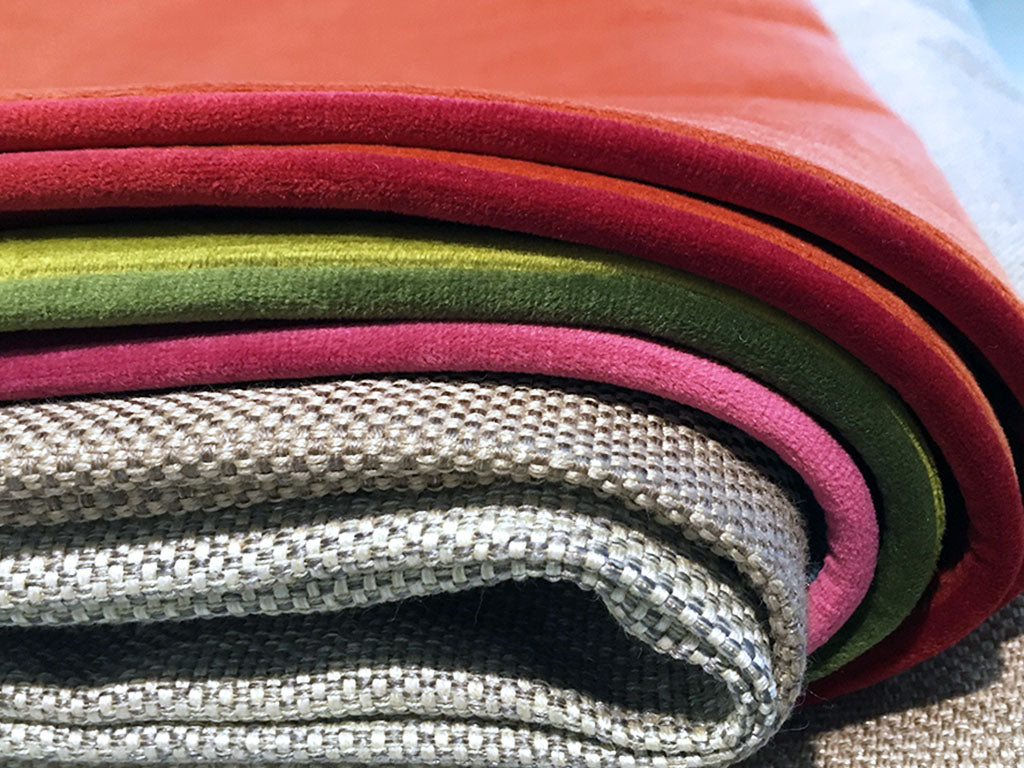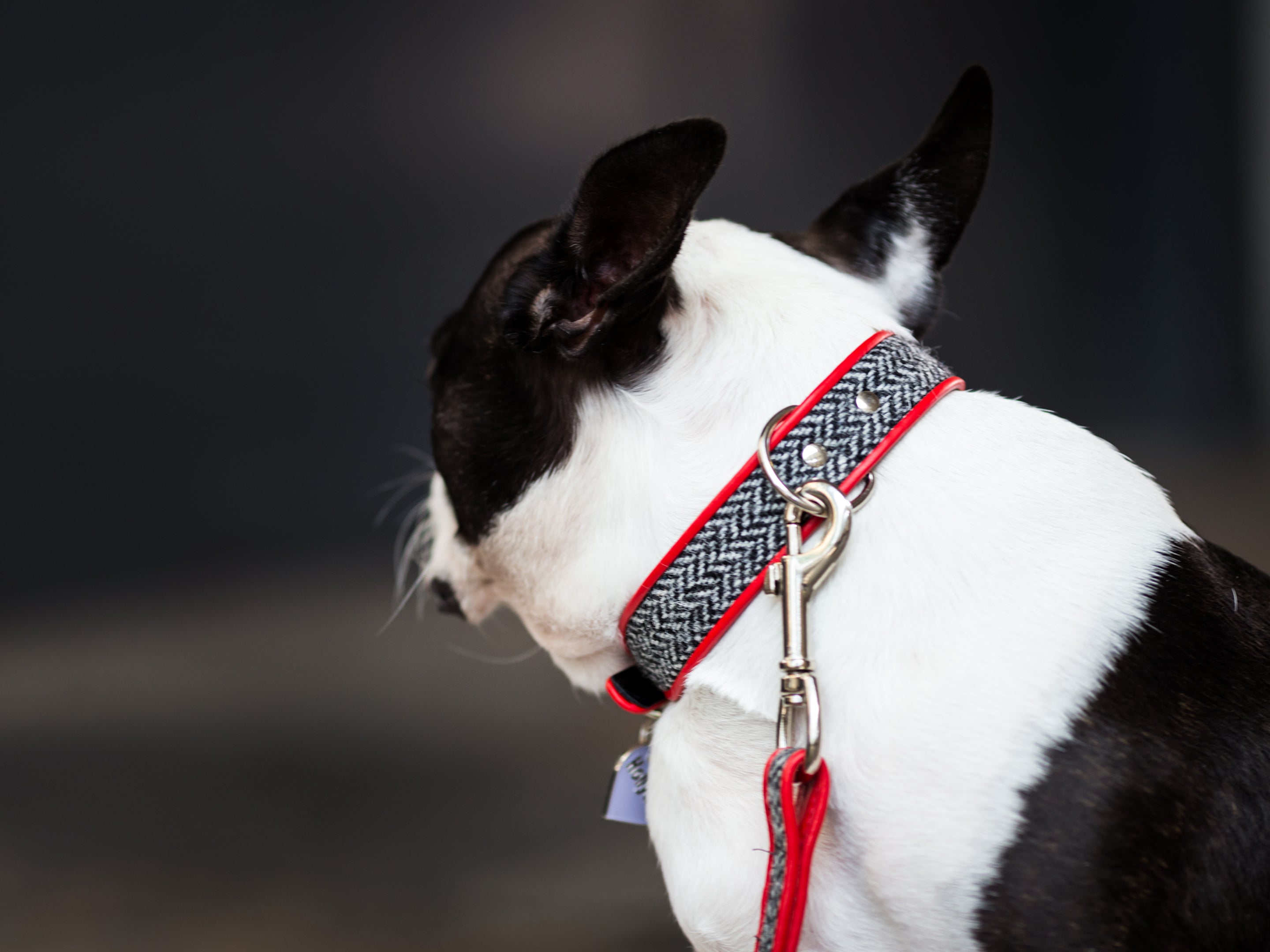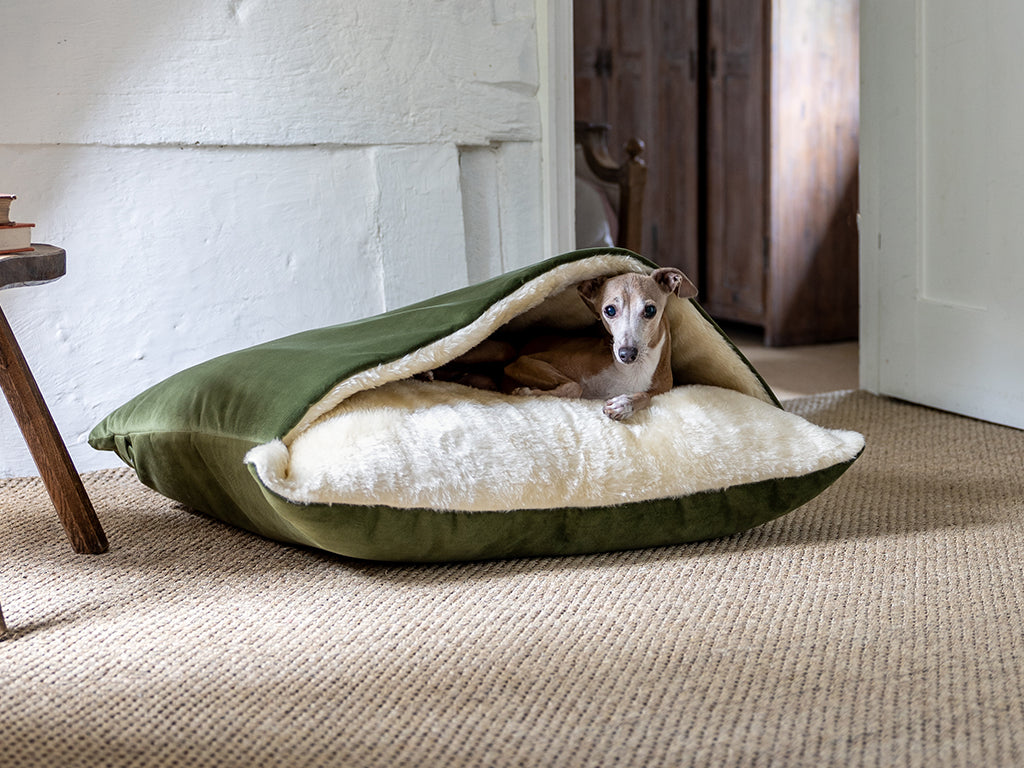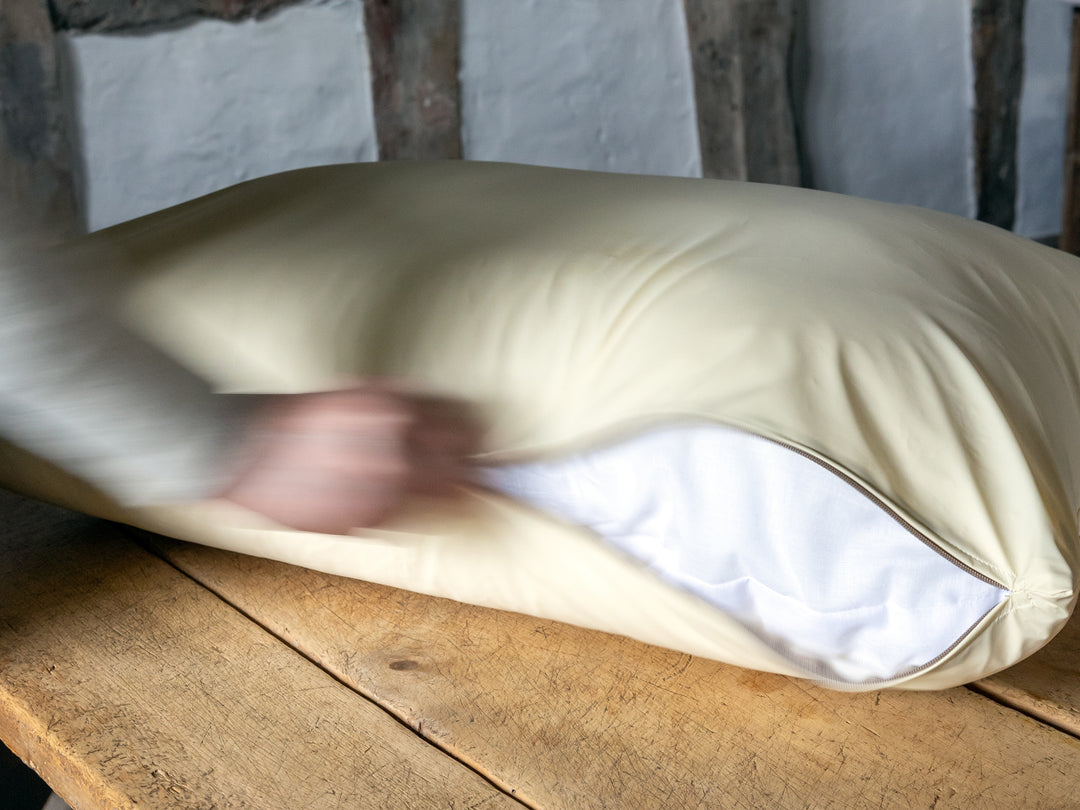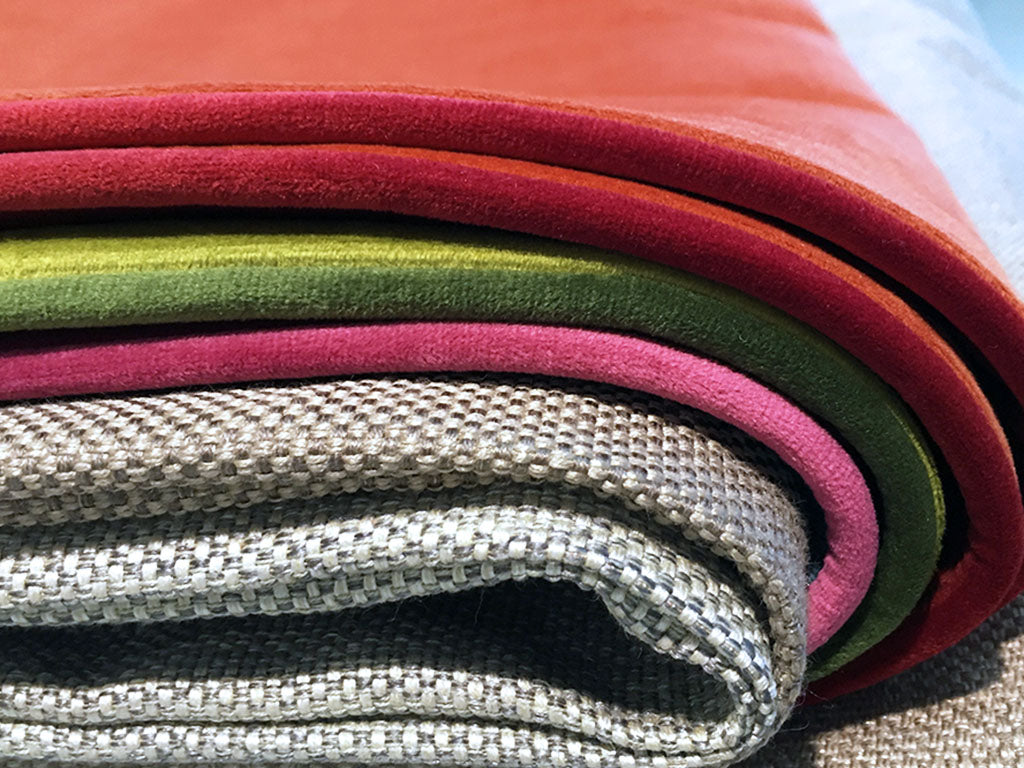Nerds guide to wash care labelling

Washing dog beds should not be a trauma. At Charley Chau we have a mantra of "machine washable everything!"
In fact, we're quite nerdy at Charley Chau when it comes to wash care and keeping dog beds clean and fresh - not just so you don't have to put up with fruity smells in your home, but because clean dog beds are much better for your dog too!
We never thought when we first designed our Snuggle Bed that it would lead to researching subjects we had never previously given any thought to - like washing machines, and specifically what washing machines do to fabrics! We thought we'd share some of bits and bobs that we have found interesting and in some cases enlightening when it comes to wash care!
We have to start with stating the obvious: read the label! All of our dog beds and dog blankets have a wash care label stitched into them for reference.
Secondly, make sure you understand what the labels mean. Again it sounds obvious but actually some of symbols are a bit obscure and unless you've read a manual on them they're not self-explanatory.
Common care symbols found on Charley Chau dog beds and dog blankets
This is not a comprehensive guide to wash care symbols around the world, merely a reference sheet of the symbols found on Charley Chau care labels.
|
|
Machine washable |
|
|
Machine washable |
|
|
Machine washable |
|
|
Can be tumble dried |
|
|
Can be tumble dried |
|
|
Do not tumble dry |
|
|
Can be dry cleaned |
|
|
Do not dry clean |
|
|
Can be ironed |
|
|
Can be ironed |
|
|
Do not iron |
|
|
Do not bleach |
Some very nerdy additional information ...
Machine Washing - wash cycle types
The wash tub means that an item can be machine washed. But make sure you look for whether or not there is single line or double underline underneath the wash tub - the underlines make a big difference!
|
|
Standard wash e.g. cotton wash |
|
|
Reduced agitation & spin speed e.g. snythetcis wash |
|
|
Very gentle agitation and spin speeds e.g. delictaes or wool wash |
The underlines really do matter. The difference between the wash types is significant and it's not just how long each wash takes to complete. Each wash type delivers a different level of fabric agitation and this can have a huge impact on the fabric being washed, especially for more delicate fabrics such as Faux-Fur on the fluffy faux-fur fleece lining on our Snuggle Beds and our gorgeous Faux-Fur Blankets. So if the wash tub has an underline or double underline make sure that you select an appropriate wash cycle!
Hot tip: the less washing agitation that you subject any fabric-based item to over time, the more likely you are to prolong the life of the item, even if the item can be washed on a cotton wash!
A note on Quick Wash cycles
There is no standard care symbol for a quick wash at the moment. It's tempting to use quick wash cycles for convenience but be aware that the majority of quick wash cycles require a half load in the drum and deliver very high levels of agitation. Quick washes effectively get things clean by washing them hard for a short time. This is not very kind to the items in the wash and when it comes to fluffy fabrics like our fabulous faux-fur fleece (in our Snuggle Beds) or our gorgeous Faux-fur Blankets they should be avoided.
Food for thought from Which?
Which?, an independent UK consumer rights organisation, has done a fair bit of research into washing machines and wash performance. Here's some interesting stuff we found on their website ...
What's the best temperature to wash at?
Anecdotally it seems most people like to wash on 40°, and believe that washing at higher temperatures is more likely to (i) clean better and (ii) kill bugs.
Do higher temperatures deliver a cleaner wash?
As of December 2013 all new washing machines in the UK are required by law to have a 20° wash cycle so Which? tested the wash performance of five washing machines on the 20°C cotton wash and compared the results to a 40°C cotton wash.
What they found was that a 20° wash performed just marginally short of a 40° wash with only an olive-oil based stain not washing out as well as at 20°. However, a big bonus was that reducing the temperature reduced the running costs of the wash by an average of 66% - good home economy and better for the environment!
A 30° wash shows similar results - with wash performance slightly better than a 20° wash and only slightly short of a 40° wash with the olive oil based stain being the only stain not to wash out as well.
So it appears that, unless we're talking about oily stains, a lower temperature of wash of 30° or even 20° is going to do the job just s well! Read the full article "Washing Machine Programme Guide" on the Which? website.
Do hot washes kill bugs?
This is very relevant to us dog loving folk who worry about how to keep dog beds hygienically clean and smell free. I used to think that hot temperatures in the machine at home would kill off bacteria and any other nasties that might be lurking around but it looks like I may have been wrong ...
According to Which? not all washing machines actually wash at 60°C even when set to a 60°C wash cycle! Which? tested 12 machines and only 4 actually reached 60°C, and even then, the machines that reached 60°C maintained the temperature for a very short time.
Their website goes on to quote Bill Grant, emeritus professor of Environmental Microbiology at the University of Leicester:
"Bacterial spores and some viruses are quite resistant to 60˚C. The major sanitising effect of the domestic wash is the removal, rather than destruction, of bacteria and viruses."
I guess this means that the quality of our washing powder or washing liquid is much more important when it comes to getting things hygienically clean. Read the full article on the Which? website: "Should I be washing at 60˚?"
If you have managed to read all of this page then welcome to our Nerdy Wash Care Club! Please bear in mind that all washing machines vary. Please refer to the manual that came with your machine for advice specific to your make and model. We're not washing machine experts, we just wanted to share some of the information that we have found useful in our research. Hope it was helpful!




